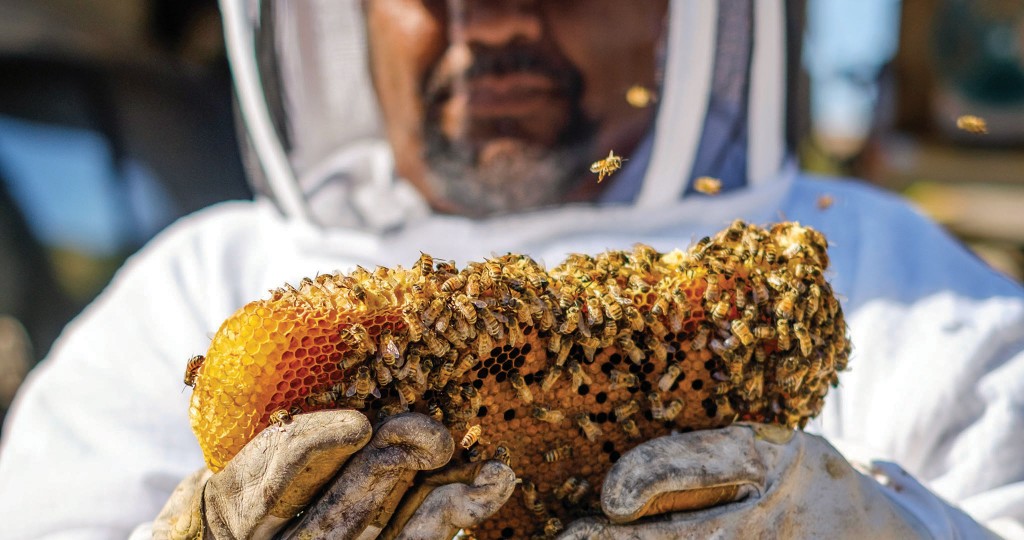Sweet Deal
Beekeeper relocates troublesome insects from homes to the wild.

“Pest” is not the first word that typically comes to mind when one thinks of bees. However, many bees make hives out of houses, forcing homeowners to extricate them. It’s a sticky situation — on one hand bees are a vital part of our ecosystem, but, on the other hand, they can make life pretty miserable with painful stings and constant buzzing.
Hawaii state Rep. Linda Ichiyama is working with Harmeyer on a bill that will require pest control companies to contact live removal specialists any time bees are involved to see if they can be safely removed rather than exterminated.
Enter Ken Harmeyer, a no-kill bee remover and beekeeper for more than a decade. His interest in bees first started when he realized bees are the only insects that produce something humans eat. “For a teaspoon of honey it takes 10,000 trips. So it’s either one bee 10,000 times or 10,000 bees making the trip one time,” he says.
The process starts with a phone call to the Hawaii Bee Hotline — 384-7357. From there Harmeyer will determine if he and his crew (his wife, Penny, and volunteer John Motlagh) can safely remove the bees on their own. If not, extermination may be necessary as a last resort. If they can safely remove the bees, the process is as follows:
SMOKE
Harmeyer pumps smoke into the general area of the bees to determine the scope of the infestation. The smoke annoys the bees and gets them buzzing. Harmeyer then uses a stethoscope to better pinpoint their location.
NEW HIVE
The crew then opens whichever part of the ceiling or wall is necessary to access the hive. The hive is cut out and rubber bands are placed around the combs of the new boxed hive, which is placed near the old hive location to give the bees time to relocate.
PLUG AND CHUG
About three-quarters of the bees will be removed without harm, but it’s impossible to catch all the stragglers, so a small amount of insecticide is sprayed into the affected area. Then the entire area is filled with canned foam to ensure no bees can use the space again.
A NEW HIVE TO CALL HOME
Harmeyer transports the bees in temporary hives made of recycled wood and delivers the bees to various ranches around Oahu, including Kualoa Ranch, where he manages the hives.
RECIPE: Wicked Tiki Tea
By Brittany Tomlinson of The Brewseum
1 cup chai tea
2 tsp. honey
1/2 cup pineapple juice
1.5 ounces bourbon
4-6 fresh mint leaves
Garnish: mint and orange slice
Brew 1 cup of chai tea with hot water, letting the tea bag steep for 2-3 minutes. Discard tea bag and stir in honey until blended. Let the mixture cool, then add to a cocktail shaker with the pineapple juice, bourbon and mint leaves. Give it a few quick shakes to blend the flavors. Pour over ice. Add an orange slice and mint to garnish.
DID YOU KNOW?
- Bees react aggressively to dark colors, so wear lighter shades of clothing when around bees. Also, be extra careful if you have dark hair.
- One bee will make about half a teaspoon of honey in its lifetime.
- For babies younger than 1 year old, honey can be deadly. Honey can carry a bacteria called clostridium, which causes infant botulism, a condition that weakens the baby’s muscles.
- Eighty-four percent of commercial crops depend on bee pollination. (Source: activesustainability.com)
- Normally, the darker the honey, the richer its flavor will be.
- One hundred crop species provide 90 percent of food around the world. Seventy-one of these are pollinated by bees. (Source: activesustainability.com)








